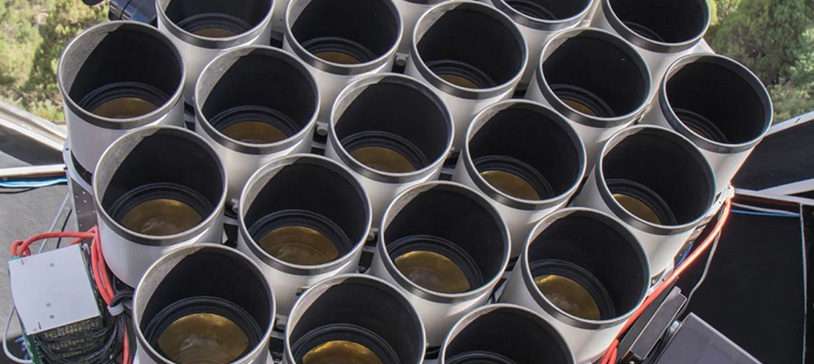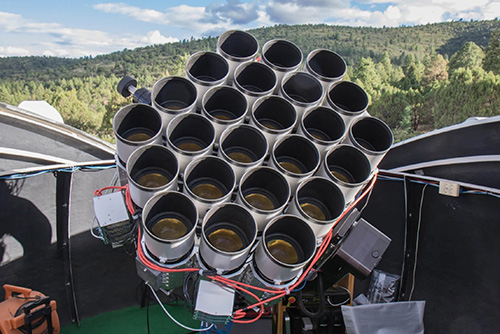
The Dragonfly Telephoto Array Project

Canon U.S.A., Inc. announced in November 2021 that the company will provide technical assistance to Project Dragonfly, an international research team from Yale University and the University of Toronto, in its plan to expand the Dragonfly Telephoto Array. The company will provide the project with 120 large-aperture super-telephoto single-focal length lenses, and its parent company, Canon Inc., will provide technical assistance.

The Dragonfly Telephoto Array is capable of capturing images of galaxies that are so faint and large that they previously escaped detection by even the largest conventional telescopes. It is equipped with multiple Canon large-aperture super-telephoto single focal length lenses—specifically, the Canon EF 400mm f/2.8L IS II USM lens.
“With the addition of 120 of these lenses, in a newly developed configuration allowing extremely narrow filters to be used, Dragonfly will be the most powerful wide-field spectroscopic line mapping machine in existence,” says Pieter van Dokkum, professor at Yale University.
The telescope was designed in 2013 by Project Dragonfly. The international research team’s mission is to study the low surface brightness universe to elucidate the nature of dark matter and to utilize the concept of distributed telescopes.
“With the addition of 120 of these lenses, in a newly developed configuration allowing extremely narrow filters to be used, Dragonfly will be the most powerful wide-field spectroscopic line mapping machine in existence.”
-Pieter van Dokkum, professor at Yale University
“The Dragonfly Telephoto Array is the pre-eminent survey telescope for finding faint, diffuse objects in the night sky,” says Van Dokkum. “It has enabled us to discover ultra-diffuse galaxies and other low-surface brightness phenomena—rendering images that deepen our understanding of how galaxies are formed and providing key insights into the nature of dark matter.”
In 2015, Canon supported this research by supplying 40 Canon EF 400mm f/2.8L IS II USM lenses, expanding the array to 48 lenses with 24 telescopes bundled on two separate mounts. Since then, the research team has produced significant results in extragalactic astronomy, including discovering the ultra-diffuse galaxy Dragonfly 44 in 2016 and the identification of a galaxy that lacks dark matter, NGC 1052-DF2, in 2018.
This time, Canon will provide technical assistance by supplying 120 Canon EF 400mm f/2.8L IS II USM lenses to the research team, further expanding the telescope array. With a total of 168 lenses, the telescope array has a light-gathering capability equivalent to that of a refracting telescope of 1.8 meters in diameter, with a focal length of only 40 cm, and is expected to open new windows on the universe.
“A major goal of the next iteration of the Dragonfly array is to detect and study the faint gas thought to exist around and between galaxies,” says Van Dokkum. “By opening this new window on the cosmos, Dragonfly will tackle some of the most critical questions in astrophysics today.”
Canon is committed to contributing to the development of science and technology by leveraging the technological strengths it has cultivated as a leading imaging company.


